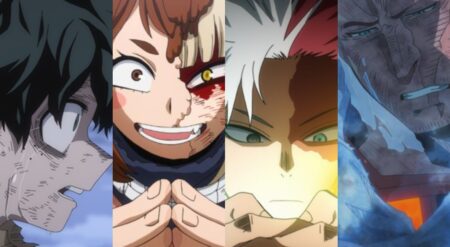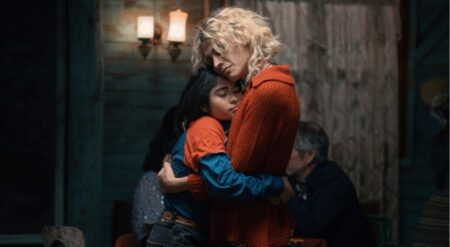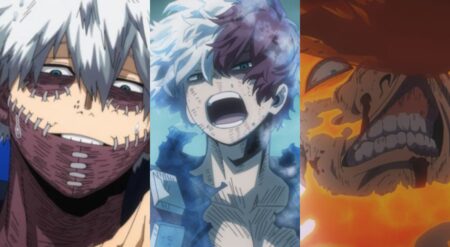One of the big launch titles for the Nintendo Switch 2 was Square Enix’s Bravely Default Flying Fairy HD Remaster. What’s most impressive about this remaster is its seamless transition from a 2012 3DS game to feeling right at home on the Switch 2.
Taking features that required key aspects of the 3DS, like Street Pass, and making them work well in an online-focused future. But most importantly, the remaster never wavered from being true to its original experience while adding new quality-of-life features to make it more welcoming. A difficult balance, to say the least.
We had the opportunity to chat with Naofumi Matsushita and Tomoya Asano, the Producer and General Producer of the Bravely series, about the remaster. Specifically about what effort went into making the jump from 3DS to Switch 2, choosing when to hold back on fan-favorite features from its sequels, and more.
Devs say Bravely Default Flying Fairy HD Remaster’s biggest selling points were its new minigames.

One of the biggest selling points of the remaster was the two new minigames. Each focused on the Switch 2’s major feature, the Joy-Cons also working as mice. So what led to the idea of these two games? Games that are key to unlocking more options for encounter rates, and more in the main game.
According to Matsushita-san, these games are true to the ethos of Bravely Default. “When it comes to Bravely Default, one of its main selling points is its use of various features of the hardware. So if we were going to release it on new hardware, I wanted to include something unique to it”.
Asano-san added more specifically about the focus on the mouse features. “As creators, it’s fun to be able to create something using new features on new hardware. I think everyone is eager to experience what it’s like to use a mouse with both hands. So I’m glad we included these minigames at launch.” As someone who’s played a lot of each minigame, playing both with a key focus on using both hands constantly was very different. They required a lot more coordination than originally expected.
Less was more when picking which minigames to develop.

Matsushita-san went into more detail about how the two minigames came about. And more specifically, why more weren’t added. “We came up with many ideas for minigames with Cattle Call (the studio that developed the remaster version). But we decided that rather than just increasing the number of minigames, we would focus on making more substantial minigames, which led to the two minigames included in this
release.”
Matsushita-san explained more about why Rhythm Catch and Ringabel’s Panic Cruise were the ones selected. “The rhythm game ‘Luxencheer Rhythm Catch’ was one we quickly decided on. A rhythm game using both hands for mouse control seemed like a unique experience, and we thought the gameplay would be easy to grasp from the screen.”
He continued, “We created ‘Ringabel’s Panic Cruise’ with the concept of making a game using double
mouse controls that was unlike anything else out there.” Even now, I’m still playing Panic Cruise because it’s just so much fun to play. A mix of hectic minigames and strategy to optimize a score. If Panic Cruise was released as its own game, I would be happy to play more.
Remasters tend to add new content or story bits to tie the game more closely to its sequels. We talked about why that didn’t seem to be the case with the Flying Fairy HD Remaster. Matsushita stated that this was due to their primary objective. “We aimed to keep the aspects that were already good in the 3DS version unchanged, with the goal of not altering the gaming experience. However, considering that some players would be playing the game for the second or third time, we also set the goal of improving playability.”
He continued, “As for features we chose not to implement: while this version is based on For the Sequel, our intention was to offer a pure re-experience of Flying Fairy. With that in mind, we decided not to include elements from Bravely Second. For example, features like the “Bravely Second” ability and the “SP system” were deliberately left out.
He continued, “We also chose not to implement things like ‘Consecutive Chance,’ which was one of
Bravely Second’s signature features. There were some requests to include these for convenience, but we were concerned that doing so would give the game too strong an association with Second.”
Flying Fairy kept the mechanics the same as the original to uphold continuity.

But that’s not to say that many features and classes from future iterations weren’t considered for the remaster. Matsushita-san talked about this and more as part of the planning phase of the game. “We did consider it during the planning stage. However, taking the Japanese version as an example, Bravely Default underwent two rounds of updates—Flying Fairy and then For the Sequel. Even by the time of For the Sequel, the scenario had already been fine-tuned, so in terms of the story, it was effectively a completed work.
“In other words,” he continued, “there was very little room to add new jobs or story content without affecting continuity, and any additions would have required careful consideration to maintain consistency with Second. On top of that, the costs and scheduling impact of recording new voiceovers for both the Japanese and international versions were significant factors. Ultimately, we decided to stay true to our original goal: to deliver a polished and faithful port, and instead focus thoroughly on improving the overall quality of the gameplay experience.”
Finally, we discussed the challenges of adapting a 3DS game to an HD version. Matsushita-san explained that the hardest part was updating the UI. “We had to rebuild the entire UI as we were combining something that was designed to be split across two screens into just one. We had quite a hard time creating a new UI that made the game smoother and more convenient to play, while also making the information easy to follow for newcomers.”
Remastering Flying Fairy HD wasn’t just pressing a button to adapt it to a different platform.

Matsushita-san continued explaining another key aspect of the original, the augmented reality movies. “One other thing was the AR movies. Where the original 3DS platform let you move the system itself in all directions so you could have fun composing a scene, for the remaster, we are using a controller, so we tried to recreate as close to an experience as possible using the controller to alter camera angles.”
It’s always nice to see a peek behind the curtain. Remastering a game isn’t just pressing a button to adapt it to a different platform, especially when it comes to updating an over ten-year-old game from a dual-screen handheld to a 1080p handheld/4k docked interchangeable device.
Balancing the addition of fan-favorite features from future iterations with staying true to the original experience is not easy. However, Matsushita and Asano-san pulled it off, and were able to not only bring back the original Bravely game, but make it feel right at home on the Switch 2.
Bravely Default Flying Fairy HD Remaster is available now on Nintendo Switch 2.






![[EXCLUSIVE] ‘Invincible VS’ Devs Dive Deep Into Their New Original Character: Ella Mental Ella Mental in Invincible VS](https://butwhytho.net/wp-content/uploads/2025/12/Invincible-VS-Ella-Mental-But-Why-Tho-1-450x247.jpg)
![[EXCLUSIVE] Palia Devs Dive Into Winterlights, New Tints, Lunar Paths, And More From Upcoming Patch Palia Winterlights Patch](https://butwhytho.net/wp-content/uploads/2025/12/Palia-Winterlights-But-Why-Tho-450x247.jpg)